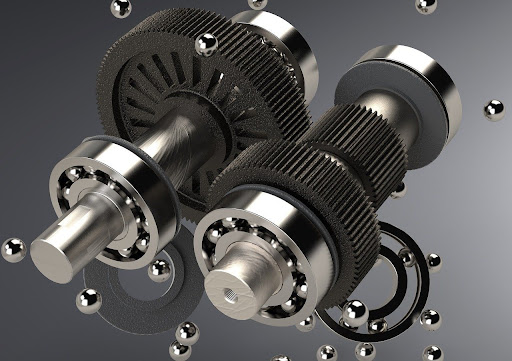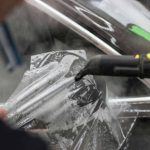The manufacturing industry has experienced tremendous change thanks to the two techniques: Computer Numerical Control (CNC) and Computer-Aided Design (CAD). It is now easy to produce products faster or by order through on demand cnc machining.
CAD design of gear box
This post will look into the processes that are there in CNC machining and the link that exists between CNC AND CAD. We will also look into the kind of machining that may be performed in numerous uses of the manufacturing technique.
Understanding CAD (Computer-Aided Design)
Engineers and designers can produce intricate virtual models of items with the use of computer-aided design, or CAD. CAD is mostly used to offer a complete platform for product design, visualization, and simulation before actual manufacturing. Using CAD software, designers may efficiently and effectively simplify the development process by identifying possible problems, refining designs, and conceptualizing concepts.
How CAD is Used in CNC Machining
CNC and CAD are very important machining processes. Designers use CAD software to produce 2D or 3D drawings of the intended product. The exact measurements, materials specifications, and other key information are added to the digital representations.CAD drawings usually serve as the blueprint of the CNC machining process that helps direct equipment to make the exact physical result that the designer thought of.
The CNC Machining Process
Designing the Product in a CAD Program
The design stage is where the path from CAD to creation starts. Designers build intricate models of the object with measurements, tolerances, and other parameters using specialist CAD software. Because of CAD’s versatility, it is possible to experiment with multiple design iterations and make sure the finished product satisfies the required specifications.
Converting CAD Designs into CNC Programs
The finished CAD design must be converted into a language that CNC machines can comprehend. The CAD file is transformed throughout this procedure into a CNC program, which is frequently written in G-code. G-code gives the CNC machine detailed instructions that include toolpaths, cutting speeds, and other elements required for the machining operation.
- Setting Up the CNC Machine
The CNC machine needs to be set up when the program has been completed. This entails inserting the raw material—typically metal, plastic, or wood—and loading the program into the machine’s control unit. To guarantee the quality and accuracy of the finished product, the setup stage is essential.
- The Machining Process
The moment the CNC machine is configured, the machining process begins. Machines can form accurate cuts and curves as displayed in the CAD design by following the G-code’s instructions. CNC machines are versatile because they can do different tasks, such as drilling, turning, and milling.
- Post-Processing and Quality Checks
The finished product may go through post-processing which includes polishing, coating, or assembly once the machining is finished. To ensure that the finished product matches the original CAD design, quality checks are carried out. Finding any differences and making sure the manufactured product satisfies the requirements depends on this stage.
Types of CNC Machining
A variety of processes are included in CNC machining, and each is appropriate for a particular use. The principal varieties consist of:
- Using revolving cutters, material is removed during the milling process. Ideal for drawing intricate contours and forms.
- Turning: Turning a workpiece to remove material with a cutting tool. Frequently applied to cylinder components.
- Drilling is the process of employing a revolving drill bit to make holes in a workpiece. necessary for a lot of manufacturing operations.
- Other Types and Their Uses: In addition to CNC machining, there are other techniques like electrical discharge machining (EDM), laser cutting, and waterjet cutting. These procedures are tailored to meet particular needs related to materials and designs.
Advantages of CNC Machining
- Precision and Accuracy
The ability to CNC or produce a final product that is the same as the virtual model is why it is mostly preferred method of product development. Precise CNC machining is mostly required in aviation, medical, and other industries that demand accuracy.
- Efficiency and Speed
Production times are greatly shortened by CNC machining when compared to conventional techniques. The machining process can operate continuously after the CNC program is ready, allowing for high-volume manufacturing with little downtime.
- Flexibility in Manufacturing
Production times are greatly shortened by CNC machining when compared to conventional techniques. The machining process can operate continuously after the CNC program is ready, allowing for high-volume manufacturing with little downtime.
Applications of CNC Machining
- Applications for CNC machining can be found in many different industries, including:
- Aerospace: Producing intricate parts for spacecraft and airplanes.
- Automotive: Making high-precision auto parts.
- Medical: Manufacturing personalized prostheses and implants.
- Electronics: Producing complex parts for electronic equipment.
- Prototyping is the process of creating working models for new products quickly.
Conclusion
Today, product development is much easier and faster with the invention and use of CNC and CAD. These techniques are the most accurate and efficient manufacturing methods used by designers. As technology keeps improving, the nature of CAD and CNC will have an effective impact on product design and manufacture.











